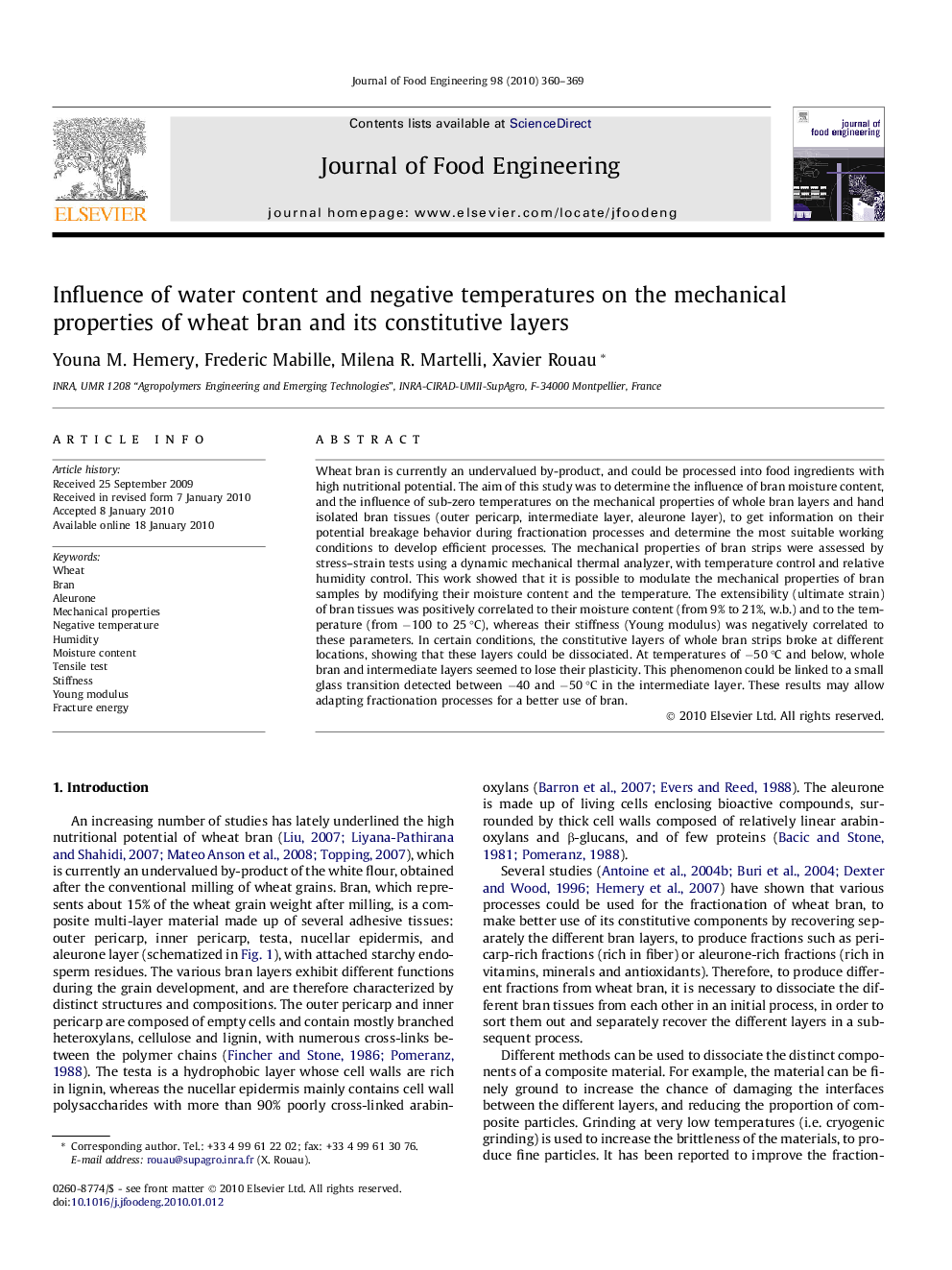| Article ID | Journal | Published Year | Pages | File Type |
|---|---|---|---|---|
| 224493 | Journal of Food Engineering | 2010 | 10 Pages |
Wheat bran is currently an undervalued by-product, and could be processed into food ingredients with high nutritional potential. The aim of this study was to determine the influence of bran moisture content, and the influence of sub-zero temperatures on the mechanical properties of whole bran layers and hand isolated bran tissues (outer pericarp, intermediate layer, aleurone layer), to get information on their potential breakage behavior during fractionation processes and determine the most suitable working conditions to develop efficient processes. The mechanical properties of bran strips were assessed by stress–strain tests using a dynamic mechanical thermal analyzer, with temperature control and relative humidity control. This work showed that it is possible to modulate the mechanical properties of bran samples by modifying their moisture content and the temperature. The extensibility (ultimate strain) of bran tissues was positively correlated to their moisture content (from 9% to 21%, w.b.) and to the temperature (from −100 to 25 °C), whereas their stiffness (Young modulus) was negatively correlated to these parameters. In certain conditions, the constitutive layers of whole bran strips broke at different locations, showing that these layers could be dissociated. At temperatures of −50 °C and below, whole bran and intermediate layers seemed to lose their plasticity. This phenomenon could be linked to a small glass transition detected between −40 and −50 °C in the intermediate layer. These results may allow adapting fractionation processes for a better use of bran.
